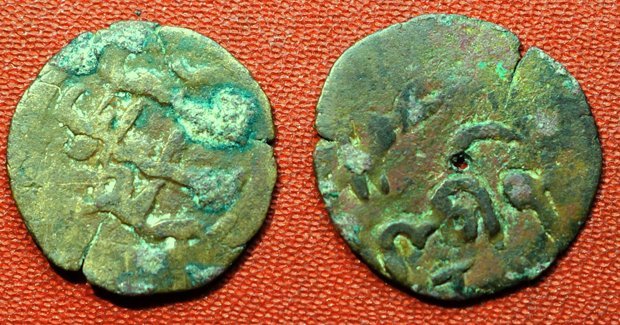Ancient coins could redraft Australian history

AN UPCOMING EXPEDITION will attempt to uncover the truth behind five ancient African coins discovered on a beach in Arnhem Land in 1944.
The five coins, found by RAAF serviceman Morry Isenberg on the Northern Territory’s Wessel Islands, hail from the medieval sultanate of Kilwa and are estimated to date back to the 12th century.
Mike Owen, a heritage consultant in Darwin, NT, who is leading the expedition, says the coins “have the capacity to redraft Australian history, in terms of a south-east Asian past.”
The Australian Geographic Society sponsored trip, scheduled for July, will attempt to uncover more clues from the site, following a hand-drawn map left by the serviceman.
Coin cache suggests early trade with Aborigines
Mike says the copper coins, which were not used outside of East Africa, probably held very little monetary value in Kilwa (centred on an island off modern-day Tanzania). “Yet, there they are – on a beach in north-east Arnhem Land, 10,000km east of where they originated, and perhaps seven to eight centuries apart,” he says, presenting a very great mystery.
The first recorded Europeans in the Wessels region were the Dutch in 1623. However, indigenous oral history from local Yolngu people is rich with visitors, says Dr Ian McIntosh, the expedition’s lead researcher and anthropologist at Indiana University-Purdue University, in Indianapolis USA.
An adopted member of Arnhem Land’s Wangurri-Mandjikay clan and an Australian by birth, Ian has spoken in depth with the Yolngu people.
“There was much talk of the Wessels as a place of intense contact history,” he says. “The Wessels is very promising as a site for further exploration, for it may hold the keys to an earlier history of Australia not currently known in the history books.”
Ian also says that north Australia lies very close to the ancient Indian Ocean trade route that linked up Great Zimbabwe, Kilwa, Arabia and Persia, India and islands in Indonesia.
Treasure hunt for Australia’s early history
The Kilwa coins were discovered alongside four Dutch coins from the 17th and 18th centuries. Mike says the most interesting aspect of the coins is the enormous expanse of space and time they cover. “This could either mean one unlucky collector of worthless coins, or routine visitation and multiple [ship]wrecks,” he says.
Another possibility being explored is that the coins were gifted to the local Aboriginal people in exchange for use of the freshwater lagoon in Jensen Bay.

Elcho Island is part of the Wessels chain in Arnhem Land, where the coins were discovered in 1944. (Credit: Mike Owen)
Researchers hope to test there theories with any results from the expedition in mid-July. A geomorphologist will also examine how the coastal landscape has changed since the coins were found. If shipwrecks are involved, how the coins washed up may provide clues to the location of a wreck, say the experts.
Meanwhile, anthropologists and a historian will work with local indigenous people to identify likely sites of contact with foreign visitors, while a heritage specialist will look after the documentation and ensure the site is protected.
“There is great interest on the part of Yolngu in this project, and in uncovering aspects of their own past,” says Ian.
An exclusive feature on the results of the expedition will feature in a future issue of the Australian Geographic journal.
RELATED STORIES

